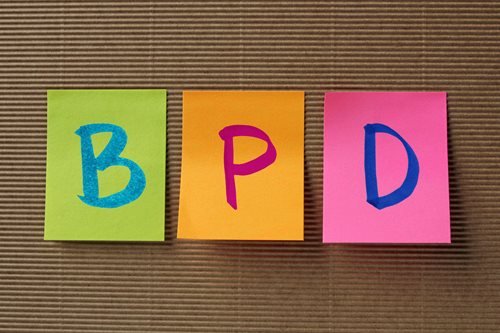Breaking Down Borderline Personality Disorder (BPD)
By Olivia Turner, NAMI Dane County Intern
Overview of Borderline Personality Disorder
The National Institute of Mental Health classifies borderline personality disorder (BPD) as “an illness marked by an ongoing pattern of varying moods, self-image, and behavior. These symptoms often result in impulsive actions and problems in relationships.” However, with the right treatment, symptoms of BPD can be alleviated.
History
Adolph Stern first lists the criteria and people affected as “the borderline group” in 1938. In 1968, Dr. Roy Grinker conducts the first research on BPD. Then in 1980, BPD was included in the Diagnostic and Statistical Manual for Mental Disorders, Third Edition (DSM-III). Finally, in 2008, The U.S. House of Representatives announced the National Borderline Personality Disorder Awareness Month.
Signs and Symptoms
Individuals with BPD may have mood swings and have a hard time deciphering their role in the world, this may lead to interests as well as values changing quickly. Many times, people with BPD tend to view things in extremes (all good or all bad). It is important to identify symptoms of BPD to help aide treatment.
Additional signs and symptoms:
- Unstable relationships
- Distorted sense of self
- Impulsive behavior
- Self-injurious behavior
- Suicidal ideation
- Intense emotions
- Dissociation
- Efforts to avoid real or imagined abandonment
Treatment
Research has shown that individuals with BPD who don’t receive proper treatment are more prone to developing other chronic medical or mental illnesses and make unhealthy lifestyle choices. Evidence-based treatment helps manage symptoms and improve quality of life. Two very effective psychotherapies used to treat BPD are Dialectical Behavioral Therapy (DBT) and Cognitive Behavioral Therapy (CBT). DBT uses mindfulness and acceptance of being aware of the current state. DBT teaches skills that aim to control intense emotions, reduce self-destructive behavior, and improve relationships. CBT can help people with BPD challenge negative core beliefs, behaviors, problems, and perceptions.
Stigma
Borderline personality disorder is frequently misunderstood, misdiagnosed, and stigmatized in the mental health world. The stigmatization of BPD can even extend to mental health professionals. Some mental health professionals even limit the amount of BPD clients they choose to see, others refuse to see BPD clients altogether. Many mental health professionals oftentimes don’t have training on how to treat BPD which may leave patients upset and frustrated. Misinformation and stigmatization can also lead to many BPD patients getting misdiagnosed - frequent misdiagnoses include bipolar and major depressive disorder.
The stigma against BPD may make it harder for individuals to live a normal life and create a routine. We need to work as a society to break down the stigma against BPD and fight against misconceptions about BPD.
Resources
Borderline Personality Disorder Resource Center aims to educate and provide resources for those suffering from BPD. Contact: 1-888-694-2273 or email at bpdresourcecenter@nyp.org
National Education Alliance for BPD provides resources for people affected by BPD. They even offer a free 12-week course called “Family Connections” that is can be accessed in-person or by teleconference. Family Connections aims to help people affected by BPD by using DBT, family skills, and group support.
Borderline Personality Disorder - information about BPD from the Cleveland Clinic
References:
https://www.nami.org/Blogs/NAMI-Blog/June-2017/The-Stigma-Associated-with-Borderline-Personality
https://www.nimh.nih.gov/health/topics/borderline-personality-disorder
https://www.verywellmind.com/stigma-a-definition-of-stigma-425329

